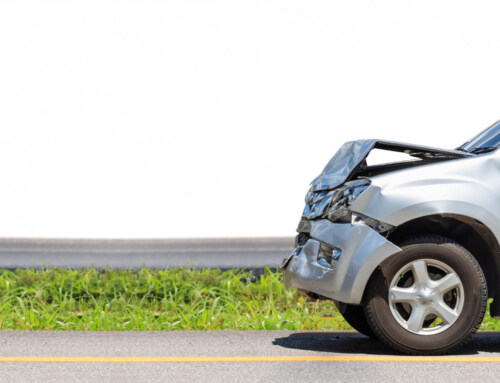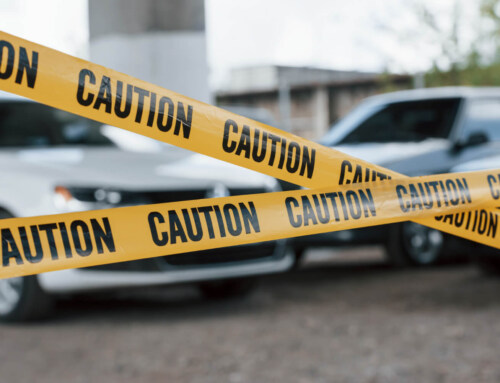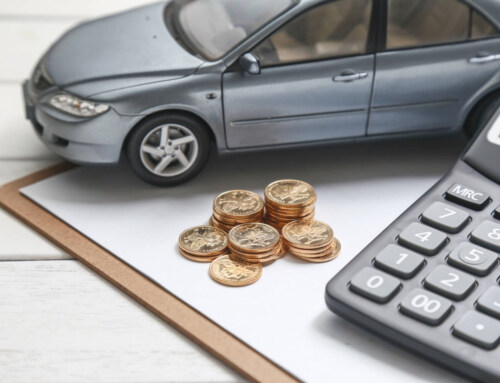It is undeniable that our automobiles play a vital role in our daily lives, whether we are driving to work, visiting friends at the park, or simply shopping at a nearby store. According to the US Department of Transportation, there are 276 million registered automobiles in the United States. In reality, 91% of families own a vehicle, and studies reveal that the typical person spends 101 minutes each day driving.
This reliance on such an important machine demands complete dependability from your vehicle, and if it fails, it can disrupt our daily routine and function. In certain cases, even put us directly in harm’s way.
Common Types of Vehicle Breakdowns
Automobile accidents can range from crashes to your vehicle stalling in the middle of the highway, and each situation poses significant hazards to you and your vehicle. Although the majority of these events are outside our control, regular vehicle maintenance and necessary automotive repair could guarantee your car is in top-shape. Furthermore, good driving habits and basic road safety can substantially limit the occurence of a car breakdown.
In any case, it is valuable to be aware of the most common types of car breakdowns and the telltale signs that lead to them:
Flat Battery
Flat batteries frequently cause car breakdowns. In the long term, it is preferable to recharge the battery, but in an emergency, a jump start may suffice to get you to your destination. Several causes of a dead battery include:
- Accidentally leaving the lights on in your car at night
- Driving simply a few miles per trip regularly, or
- Faulty electrical wiring
You might try charging your car battery if you find yourself frequently making short trips. Doing this might help it last longer, but be careful not to overcharge it.
If you’re not going out as frequently as you used to, there are things you can do to keep your car batteries in good working order. Turning the engine over or driving around the block can keep battery problems at bay. Doing this will help your car reach operating temperature.
However, If your battery keeps going flat, you should consider getting an automotive repair. There might be a good chance that your battery needs replacing. You may also have it tested, especially if your automobile is necessary for your job or social functions.
No Fuel
Running low on fuel on the road could stop your trip. When the tank is totally empty, the engine will begin to pull in air along with the last remnants of fuel. As a result, it builds up an accumulation of air in the fuel tank and combustion chamber which might require automotive repair.
Even if you know a gas station nearby, letting your car run completely dry is never a bright idea. It puts the engine under unnecessary strain and may cause you to struggle to restart your vehicle even after topping it off.
If your tank is almost empty, consider these options:
- Pull over to the side and use your GPS to locate the closest service station.
- Smooth and slow driving could prevent your fuel from being consumed more quickly.
- Turn down your radio and air conditioning to reduce the strain on your remaining fuel.
Car Overheating
Car overheating might happen when coolant and water levels are low. It could also occur when the cooling system leaks. Hot weather can make this worse. If you ever need it, carrying a bottle of water and coolant in your car might be helpful.
Don’t overlook your car overheating since you risk damaging the engine. Instead, pull over as soon as possible in a secure location, and wait for the engine to cool. After, you could prop the hood. You may contact your automotive repair and car breakdown assistance provider then.
Tire Punctures
Depending on how bad the puncture is, many things can happen. For instance, if a hole is tiny, you might not even notice it right away. Therefore, it’s crucial to be alert for symptoms like trouble steering or unexpected swerving to the left or right.
Keep a spare tire to be sure you’re ready for anything. It is also essential to have the tools necessary to change it. If you are uncertain about what to do, it is best to seek help from an automotive repair specialist.
Spark Plugs
Spark plugs function in a severe and harsh environment. They deteriorate with time and are prone to rust. While spark plugs cannot last forever, they are rather durable and do not need to be replaced on a regular basis. They should be replaced every 30,000 miles, or every two years. Neglecting proper maintenance on them may may lead to problems necessitating automotive repair, including
- Poor acceleration;
- Low fuel economy, and
- Trouble starting your automobile.
If your check engine light comes on, or if you experience any of the points mentioned above, pay attention! It is preferable to take your vehicle to a competent automotive center for a diagnostic inspection and automotive repair.
What To Do When Your Car Breaks Down
Unfortunately, accidents do happen. A keen eye and a sharp mind can only go so far in preventing vehicular troubles, but what if the worst-case scenario comes, and your automobile breaks down at the most inconvenient area and time?
Listed below are tips and safety measures that you could follow for these kinds of emergencies:
Assess the Situation
The very first thing you should do in the event that your car suddenly breaks down on the highway, is to assess the situation. Ask yourself these questions: Am I safe? Are my passenger’s safe? What could have caused the car breakdown? Can I handle the automotive repair or do I need a specialist?
It is good to remain calm and always have a plan. Inspect yourself and your passengers for any injury, and if anyone is hurt, get them safe and comfortable until help arrives. If you have had any training, try to administer first-aid to any injured party. You and your passengers’ safety are of utmost priority at all times.
If everyone is fine, attempt to figure out what is wrong with your car. Be on the watch for any peculiar symptoms if you get a chance to inspect your vehicle before assistance arrives. Even an expert technician may struggle to identify issues from the side of the road. But if you can safely pop the hood, there are particular apparent things you can assess to know what automotive repair your car needs. For instance:
- Your engine is covered in fluids;
- A belt is missing or misplaced; and
- There are burn scars everywhere.
Keep your eye on anything that looks unusual from within the vehicle as well. Try to recall any flashing warning lights you may have noticed on the dashboard. Keep track of any unusual readings your gauges may give you – such as unusual temperatures readings, or a drastic change in your gas levels.
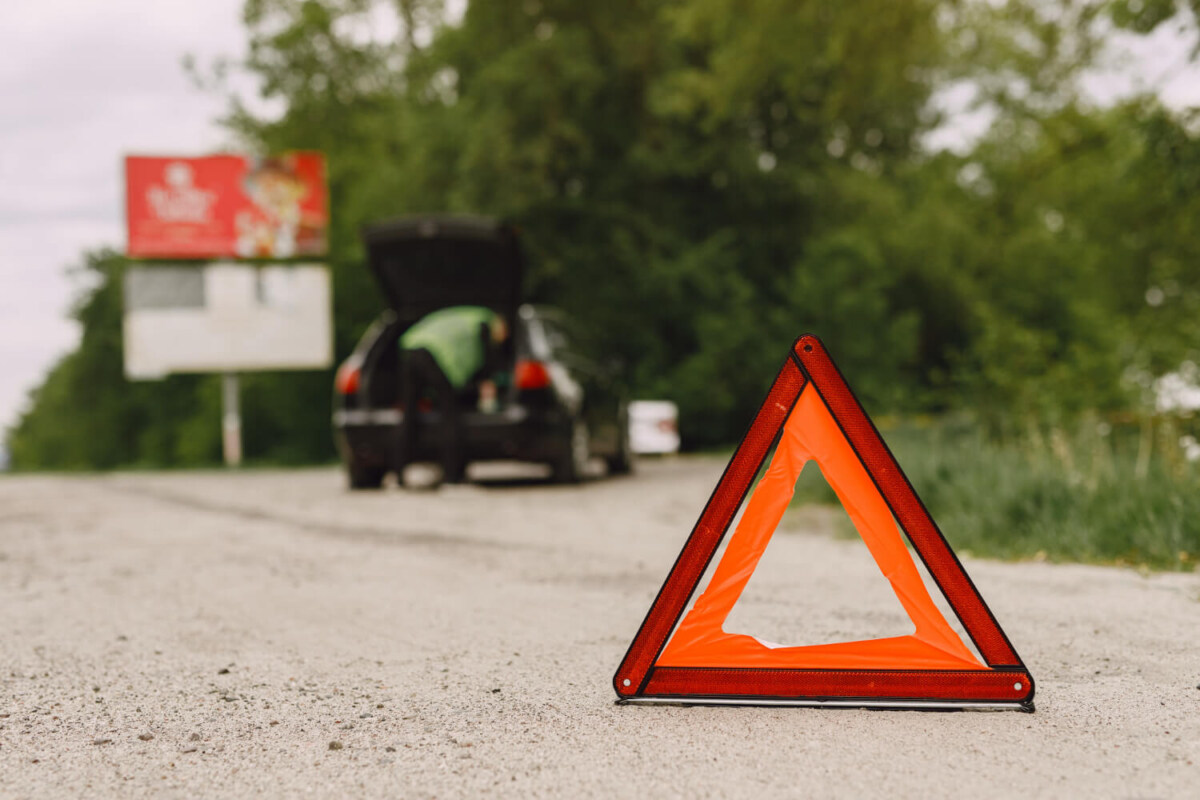
Keep Yourself Out Of Harm’s Way
Once again, whatever the situation is with your car, your focus should always be to put you and your passengers in the safest position possible. Aim towards the right shoulder of the road if you are experiencing car trouble while driving. Try to find an exit if you are on the interstate.
It would be best to stay far away from moving traffic and into a flat, secure area. Don’t forget to signal drivers behind you what you intend to do. Consider the following safety measures as you pull your car off the road:
Stay on the Side of the Road
You might have very little time to react regardless of what kind of vehicle failure you’re experiencing. Find a gap in the traffic and move your automobile through it. Try to coast along the road and park away from it. Better yet, pull over in an emergency bay. But any secure area will do if one is not in sight.
Once you’ve stopped, turn your wheels away from the pavement and apply the emergency brake.
Remain in the Same Area
Don’t get out of the automobile if the engine dies in the middle of the highway. It could be unsettling to sit in a dead car with oncoming traffic, but exposing yourself on the highway is unsafe. It is one of the catastrophic driving errors that can cost you your life. Standing outside the vehicle in the flow of traffic is generally not a good idea. Additionally, crossing a roadway at high speed on foot is exceedingly dangerous.
Don’t try to exit your car before you’ve coasted. Always ensure your safety and the safety of other drivers on the road. To avoid any safety risk, make sure your vehicle is safely parked in a flat and visible place, away from any road curves.
Be Visible
It is recommended that you make your vehicle visible to other cars as much as possible. Do it after moving your vehicle to the safest location. Taking these precautions may ensure that other motorists are aware of your emergency. And it would provide them plenty of time to steer with the required distance.
Turn on Your Lights
Turn on your hazard lights regardless of whether you can move your automobile off the road or not. Although it isn’t always in the same area, this button is typically quite noticeable.
Pop Up Your Hood
Another way to increase visibility is to raise the hood of your automobile. Doing so will alert other drivers of your situation. It will also urge them to drive carefully.
One of the main reasons for car accidents is poor visibility, so make sure to take the necessary measures.
Wear a Vest
Make sure to wear your reflective vest if you have one. Wearing a bright vest will help as you step outside the car. Additionally, avoid standing in a blind spot. Otherwise, your vehicle can make it difficult for other drivers to see you.
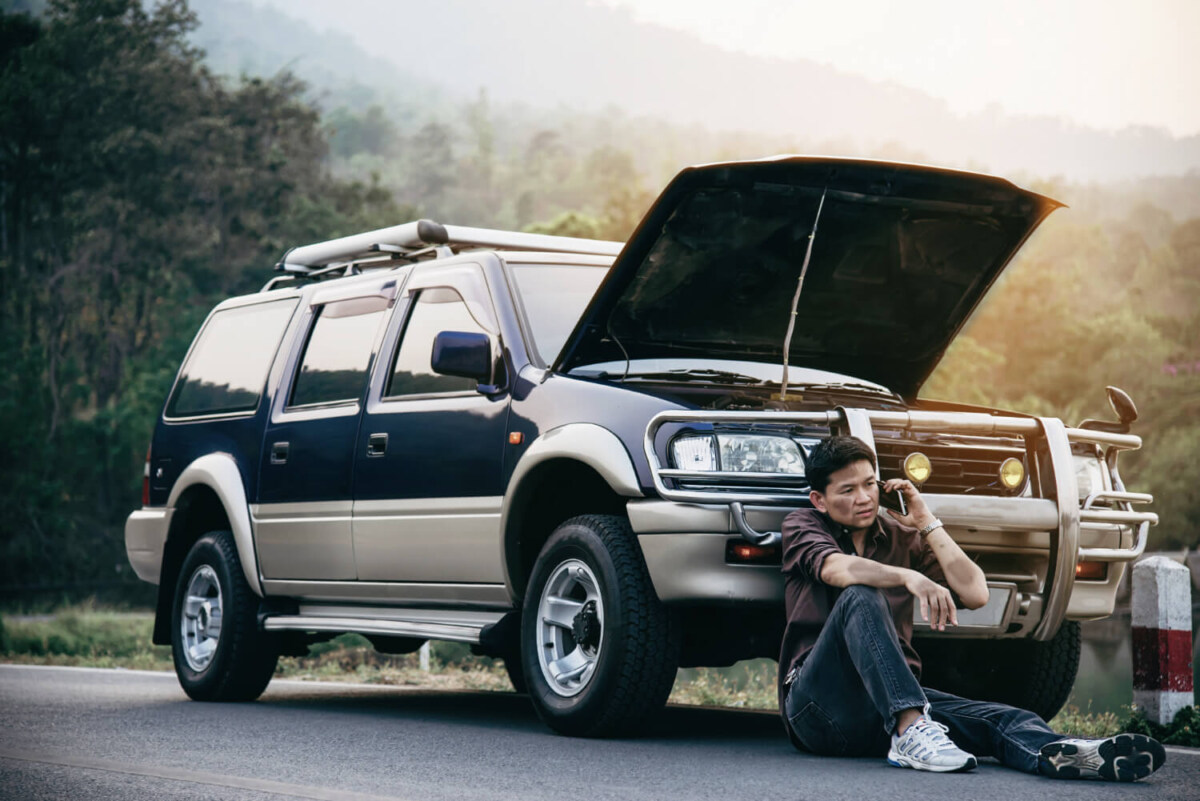
Ask For Help
You must then make a call for assistance. In case of a car breakdown, the information you offer will help the patroller troubleshoot and bring the necessary equipment for emergency automotive repair. Make a note of your vicinity. Keep an eye out for crossroads, mile markers, and exit signs. This information alone could be helpful if you need to contact an emergency road service.
Note that navigation devices can fail and do not always perform well in isolated regions.
Call Emergency Services
Focusing on dialing a tow truck or roadside help can be tempting in this situation. However, depending on the circumstances, you might need to dial 911 first.
A broken-down vehicle on a highway or at an intersection is hazardous. It can quickly result in a collision. Hence, you should make sure to alert emergency services immediately.
Inform the dispatcher that your car is obstructing traffic. They will send a police officer or other emergency personnel to start directing traffic right away.
Call a Friend or Relative
Call a relative or a friend once you’ve called the emergency services. Even if you believe you may resolve the problem, informing a family member or friend is still preferable. They can assist you if circumstances take a turn for the worse.
Look around you carefully so you can describe your surroundings. Pay attention to landmarks in particular. You can send your GPS coordinates as well for quick access.

Auto Body Shop Sunnyvale I For Road Emergency Safety
Accidents are an inevitable tradeoff to the convenience of modern transportation. And a car breakdown while driving can be nerve-racking and dangerous. Breakdowns can happen to anyone, but you can take some precautions to reduce the risk.
Of course, it’s always best to thoroughly inspect your vehicle before going for a drive. Make sure your car is maintained correctly, especially during winter cold spells. On hot days, carrying a bottle of water and coolant in your vehicle could help aid car overheating.
In addition, keep an eye on the state of your vehicle and pay attention to any unusual noises or warning lights that may be flashing on the dashboard. Maintain a quarter tank of gas at all times and note any changes in engine temperature or handling.
Lastly, you can always rely on your trusted auto shop if everything goes south. A car specialist and mechanic could help you with your vehicular issues and ensure your vehicle is in its optimum state. If you have any concerns, do not hesitate to contact Anchor Body Shop for your needs.
Auto body shop Sunnyvale offers excellent car maintenance service and automotive repair to fix your damaged vehicle. Our services include
- Glass repair;
- Fender and bender repair;
- Dent removal and repair; and
- Auto painting.
Anchor Body Shop can fix a damaged vehicle and put you back on your feet. Our specialists could give your automobile a brief inspection. Contact our shop and we’ll be more than happy to assist you.
Read our client’s testimony, Bridgette Monroe, on our outstanding services.
Tom the Manager/Owner is amazingly helpful. I was just calling around to find a place that can do a specific job, and he was very honest with me about pricing, even had some suggestions of places, and even took a few minutes to go over some details explaining how the process works. I’m very thankful for him taking the time with me, practically giving me a Free Consultation over the phone, even though he knew I’d be going elsewhere for this kind of job. Now I feel I can move forward more confidently with my decision making. He just sounds like a Good Guy! THANX TOM!


